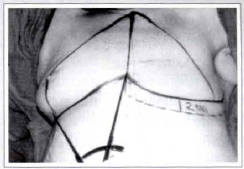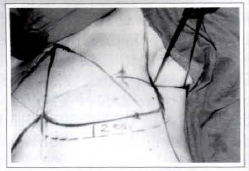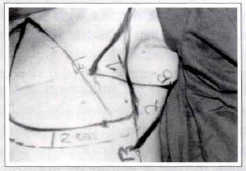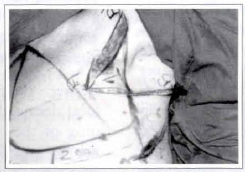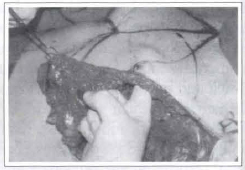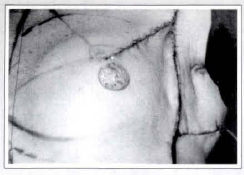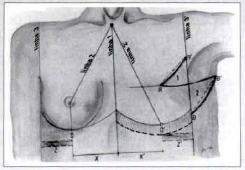
fig. 1 - Diagramatical drawing showing the lines, points, distances and flaps utilized in the surgical demarcation phase of the technique employed in breast reconstruction.

Fig. 8 - A view right after the rotation and transposition of FLAP 2 towards the medial point (we can notice the neobreast lateral limit, located exactly on the level of the new anterior axillary line).
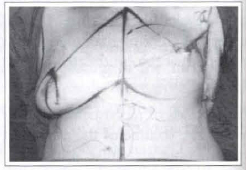
Fig. 9 - Anterior view comparison of the reconstructed breast to the contralateral breast (still not operated).
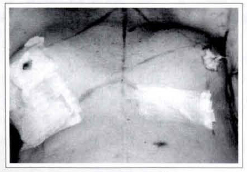
Fig. 11 . Comparison of the reconstructed breast with the contralateral breast, specially in terms of shape, position and volume.

Fig. 12 - Close-up view of the reconstructed breast and its dressing, where it is possible to notice the position of the central scar (located over the new anterior axillary line and which superior and inferior edges were sutured in V-Y, in this case); of the medial scar (located in the upper outer mammary quadrant); and of the lateral scar.
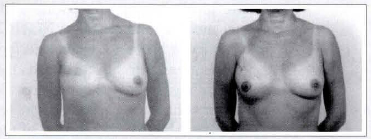
Case la - A 48-year-old patient submitted to a right breast reconstruction through the described technique (a 190 cc mammary implant). Front view: pre and postoperative.
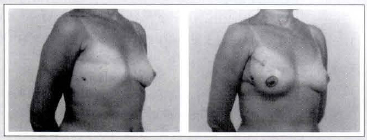
Case 1b - A 48-year-old patient submitted to a right breast reconstruction through the described technique (a 190 cc mammary implant). It is possible to see the position of scars, the shape and the volume of the reconstructed breast). Oblique view: pre- and postoperative.

Case 1c - A 48-year-old patient submitted to a right breast reconstruction through the described technique (a 190 cc mammary implant). It is possible to sec the positioned new axillary line and the greater freedom of movements of the axillary region. Proflle view: pre and postoperative.
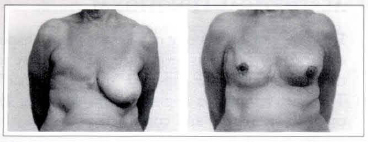
Case 2a: A 65-year-old patient submitted to a right breast reconstruction through the described technique (a 190 cc mammary implant). From view: pre and postoperative.
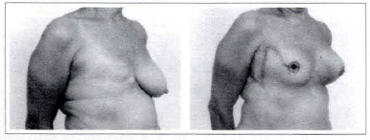
Case 2b: A 65-year-old patient submitted to a right breast reconstruction through the described technique (a 190 cc mammary implant oblique view: pre and postoperative.
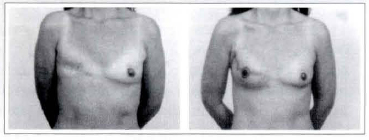
Case 3a: A 36-year-old patient submitted to a right breast reconstruction through the described technique (3 165 cc mammary implant. Front view: pre and postoperative.
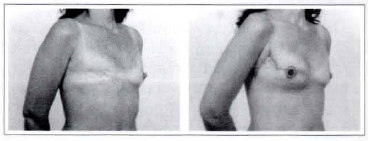
Case 3b: A 36-year-old patient submitted to a right breast reconstruction through the described technique (a 165 cc mammary implant). Oblique view: pre- and postoperative.
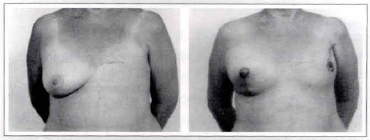
Case 4a: A 65-year-old patient submitted to a left breast reconstruction through the described technique (a 260 cc mammary implant) and reduction mammaplasty of the contralateral side. Front view: pre and postoperative.
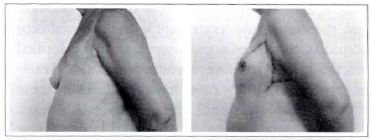
Case 4b: A 65-year-old patient submitted to a left breast reconstruction through the described technique (a 260 cc mammary implant). It is possible to notice the scars and anterior axillary line positions. Profile: pre and postoperative.
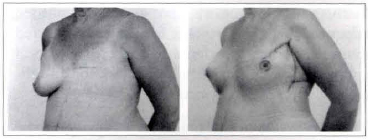
Case 4c: A 65-year-old patient submitted to a left breast reconstruction through the described technique (a 260 cc mammary implant). It is possible to notice the position of the scars, the viability of the flaps and the freedom of movements of the axillary region. Oblique view: pre and postoperative.



